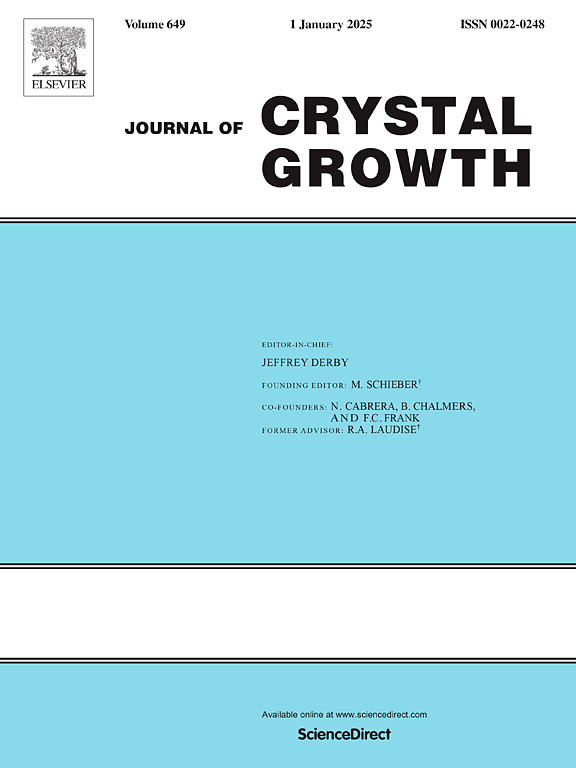Selective area molecular beam epitaxial growth of n-GaN nanowires on SiO2 hole-mask patterned sapphire and graphene substrates
IF 1.7
4区 材料科学
Q3 CRYSTALLOGRAPHY
引用次数: 0
Abstract
The growth conditions of silicon-doped GaN (n-GaN) nanowire (NW) selective area growth (SAG) are explored using plasma-assisted molecular beam epitaxy on SiO2 hole-mask patterned substrates: sapphire (SAP) and graphene on SAP (GoS). To achieve high selectivity, the growth temperature and Ga flux windows in which the nucleation on the SiO2 mask is highly suppressed are investigated and found to be quite narrow. By tuning the mask etching process, n-GaN NW morphologies ranging from vertical and widely separated NWs grown through SiO2 pinholes to densely positioned NWs with coalesced upper surface in wider mask holes are demonstrated on SAP.
Using optimized growth conditions for SAG on SAP substrates, successful growth of vertical n-GaN NWs was achieved on similarly hole-mask patterned GoS substrates. Micro-Raman spectra indicate that the graphene is well protected from the nitrogen plasma by the SiO2 mask, whereas the graphene is damaged in the holes of the mask. X-ray diffraction spectra reveal an epitaxial relationship with the SAP and resistance measurements show conductivity between NWs of different mask holes. From this, we conclude that n-GaN NWs after nucleating on SAP through nanoholes in the graphene overgrow it and that this part of the graphene, at least close to the edge of the hole areas, can conduct well to the SiO2 mask covered graphene, indicating that graphene in such configuration can be used as a bottom electrode in a device structure. The impact of Ga diffusion and desorption on SAG is demonstrated for growth temperatures of 810 and 815 °C for SiO2 hole-mask patterns with nominal hole diameter of 2.5 µm and hole pitches of 3.0–10.0 µm. For hole pitches above 5 µm, Ga diffusion from the mask is the major contribution to the NW growth.
求助全文
约1分钟内获得全文
求助全文
来源期刊

Journal of Crystal Growth
化学-晶体学
CiteScore
3.60
自引率
11.10%
发文量
373
审稿时长
65 days
期刊介绍:
The journal offers a common reference and publication source for workers engaged in research on the experimental and theoretical aspects of crystal growth and its applications, e.g. in devices. Experimental and theoretical contributions are published in the following fields: theory of nucleation and growth, molecular kinetics and transport phenomena, crystallization in viscous media such as polymers and glasses; crystal growth of metals, minerals, semiconductors, superconductors, magnetics, inorganic, organic and biological substances in bulk or as thin films; molecular beam epitaxy, chemical vapor deposition, growth of III-V and II-VI and other semiconductors; characterization of single crystals by physical and chemical methods; apparatus, instrumentation and techniques for crystal growth, and purification methods; multilayer heterostructures and their characterisation with an emphasis on crystal growth and epitaxial aspects of electronic materials. A special feature of the journal is the periodic inclusion of proceedings of symposia and conferences on relevant aspects of crystal growth.
 求助内容:
求助内容: 应助结果提醒方式:
应助结果提醒方式:


